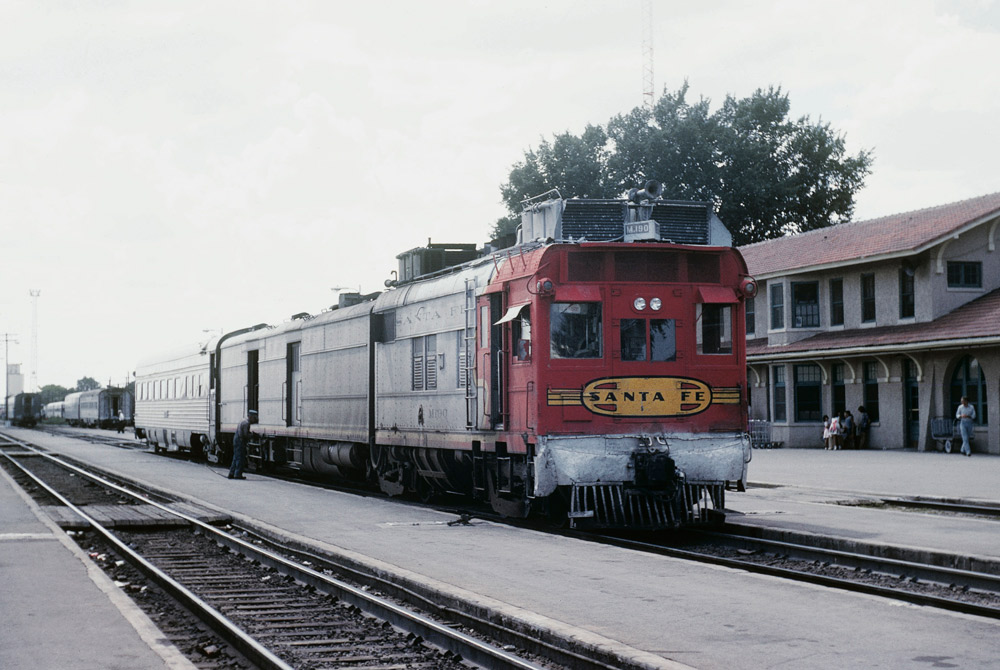
Santa Fe No. M-190 was possibly the most unusual gas-electric car ever manufactured. Measuring 90 feet long, it consisted of two articulated sections riding on three trucks. An Electro-Motive power plant and the operating cab were in the front section, and the rear portion was for baggage. When delivered in June 1932, M-190 had a Winton distillate engine; this was replaced by a 900 h.p. diesel in 1949. A key step in the evolution from doodlebug to locomotive, M-190 could pull five heavyweight coaches at passenger-train speeds on level track.
In 1961 I had been doing research in the Association of American Railroads library in Washington, D.C., and came across a photo of M-190. She was in front of Santa Fe’s old La Grande Station in Los Angeles, having just arrived from San Diego as train 71 with a baggage car, two coaches, and a cafe-parlor in tow.
Two years later, that photo was fresh in my mind as I drove into New Mexico, en route to California on vacation. Clovis was just ahead. I’d heard that M-190 was in service between Clovis and Carlsbad as trains 25 and 26. It was mid-morning; could I possibly see her?
I checked the 1963 Spring-Summer Santa Fe timetable I had with me. (Didn’t we always take timetables with us on long trips in those days?) In Table 22, I learned that train 26 was due into Clovis from Carlsbad at 1 p.m. It would not delay me much to spend some time in Clovis, where I could have lunch and be able to see for myself the one-of-a-kind car that had become such a fascination.
I happened to be at the Clovis station before lunchtime when I received an unexpected bonus — the westbound San Francisco Chief, which arrived a few minutes after 11 a.m. I had not even thought to check the timetable for any other Clovis listings!
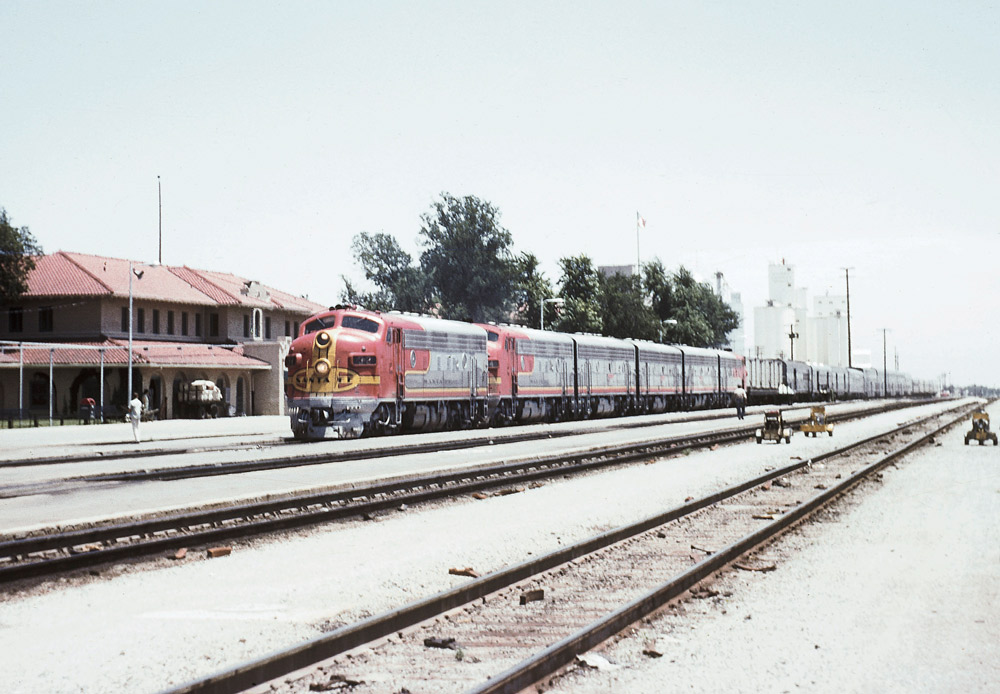
What a show I saw. The Chief was blue-flagged for servicing. The F-unit locomotives were refueled and watered, and the windshield and headlight of lead F3 No. 32L got a good scrubbing. The food-service cars were iced; water tanks in the coaches and sleepers were topped off; and the whole train received an inspection.
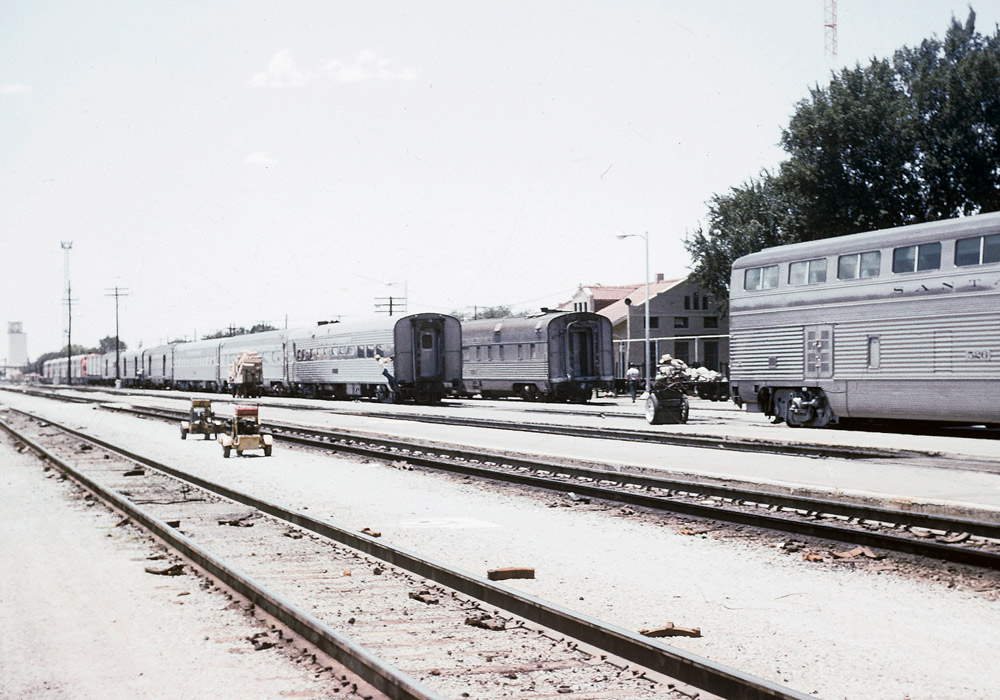
The main act was the melding of cars from Dallas and Houston, which had arrived on train 75 at 9:30 that morning, into the Chief’s consist. The Baldwin switcher on duty had to do a lot of pushing and pulling to get the coaches and sleepers from Texas properly placed in the Chief’s consist.
No. 1 left Clovis on time at 11:40, leaving me more than an hour before M-190 was due. I enjoyed a Mexican lunch and still had plenty of time before a burbling sound from the west announced the arrival of the reason for my hanging around.
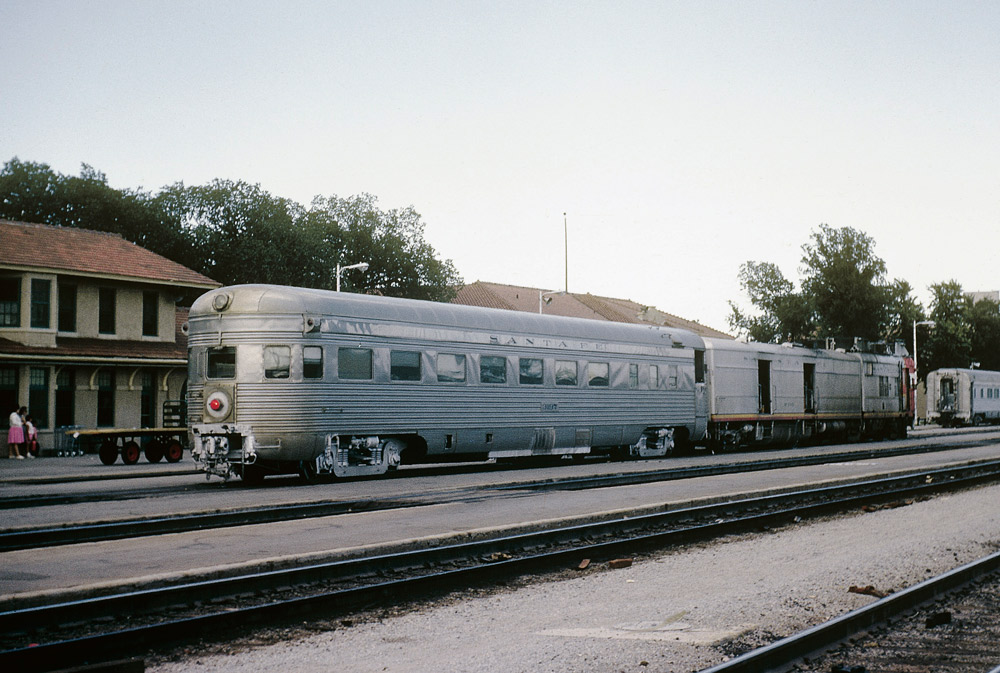
With an observation car in tow…
The celebrity motor car rolled in, dressed in a modified version of the famous Warbonnet paint scheme. I busied myself taking photos as a surprisingly large amount of mail and express was unloaded from the baggage section. M-190 was pulling coach-observation car 3197, a Pullman-Standard product delivered just after World War II. The car had brought about a dozen passengers into Clovis.
After passengers and head-end business was unloaded, the Baldwin goat that had switched the Chief dragged M-190 and the 3197 west from the station, back to the wye where the Carlsbad branch joined the main line. In due time the switcher spotted the consist, reversed in direction, in front of the station. New mail and express was hefted into the baggage compartment, a few people boarded 3197, and at 1:45 the big motor car accelerated out of town as train 25. It was due back into Carlsbad, 184 miles south, at 6 that evening.

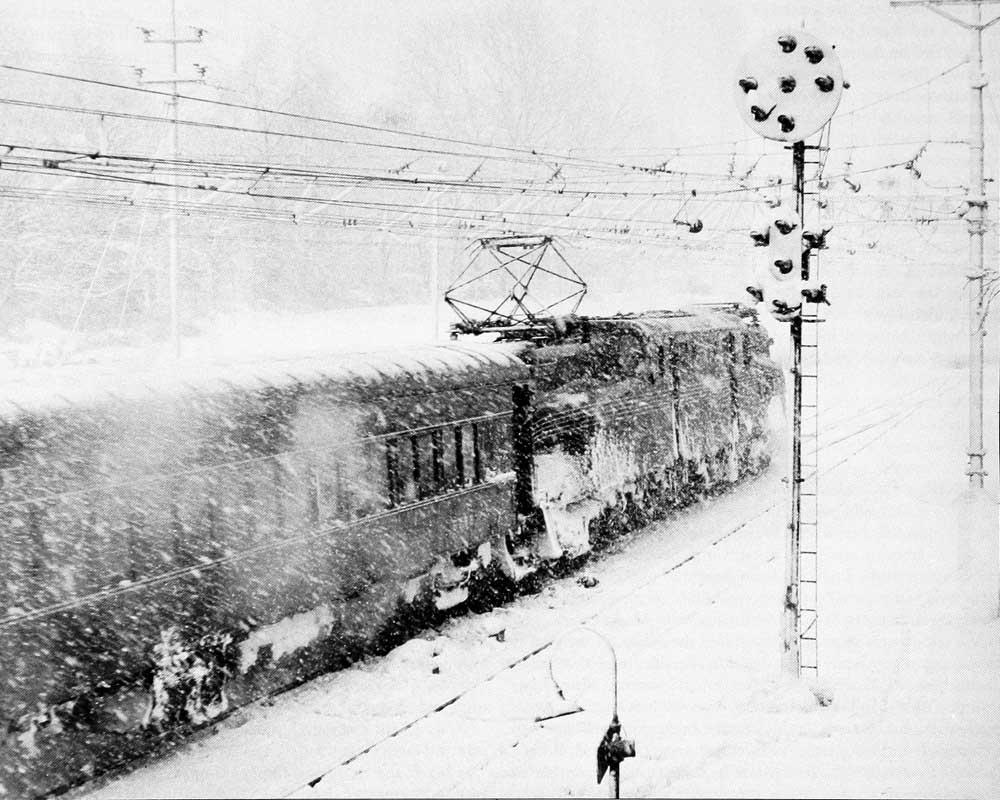
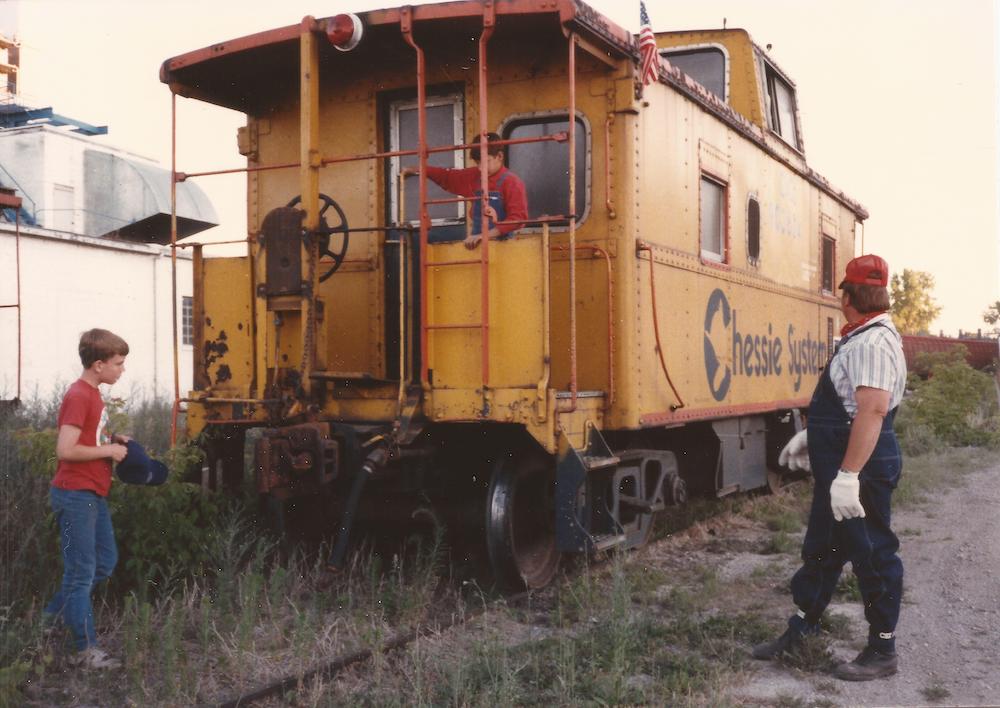
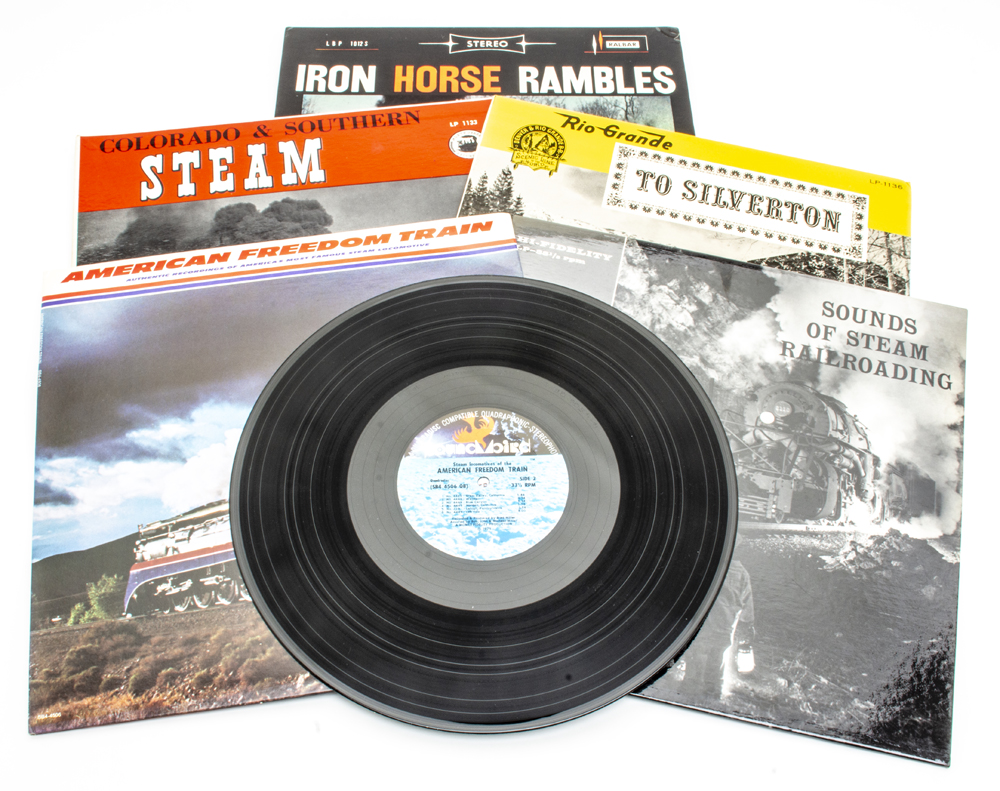
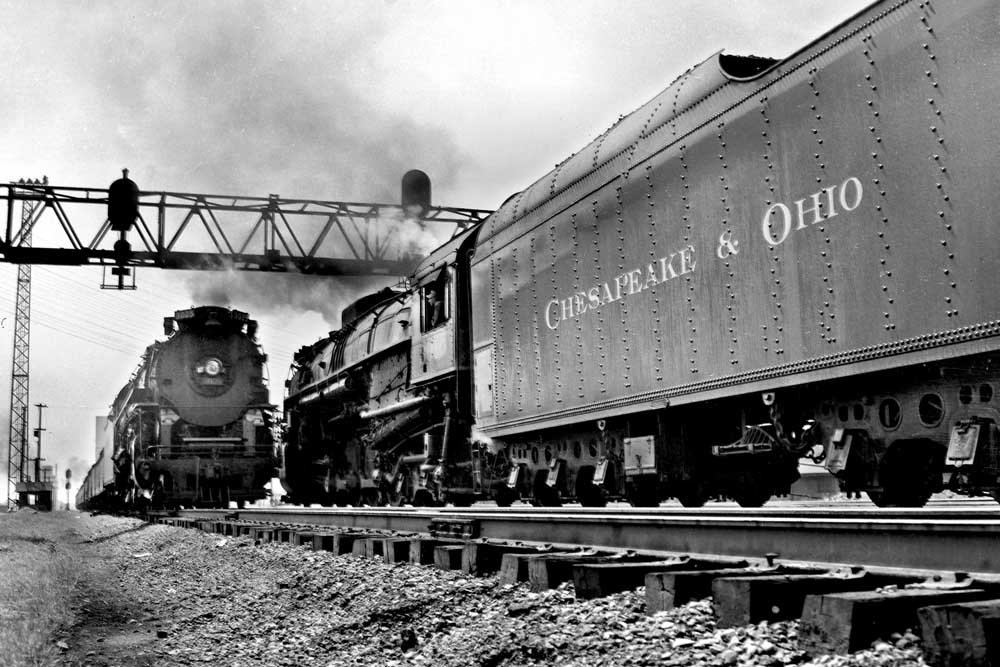




M190 now resides down in Belen, NM on display south of and slightly west of the BNSF yard. It looks pretty sad. I hope they can restore it one of these days, at least cosmetically although it would be nice to see it run again.
I saw train 26 in March 1966 but the motive power had become M-160, a non-articulated motor car, trailing the same observation car. I was pleased that westbound train 1, SAN FRANCISCO CHIEF, and connecting trains 75 and 76 to Temple, Texas were behind Alco PA 1 units at the time. I was on a weekend break from pilot training at Reese AFB in Lubbock.
The westbound San Francisco Chief left before noon, so with what trains did 25 and 26 connect? A good connection for passengers coming from the east and Texas, going to Southeast New Mexico but what about passengers going east, west, or to Texas?
Interesting, I have a friend working on a construction project now near Clovis, NM. He sees many trains on BNSF passing by and Clovis has a big railyard that he passes every day. He knows I am a railfan, so kept his eye out to see what kind of rail traffic they had, and very busy line.